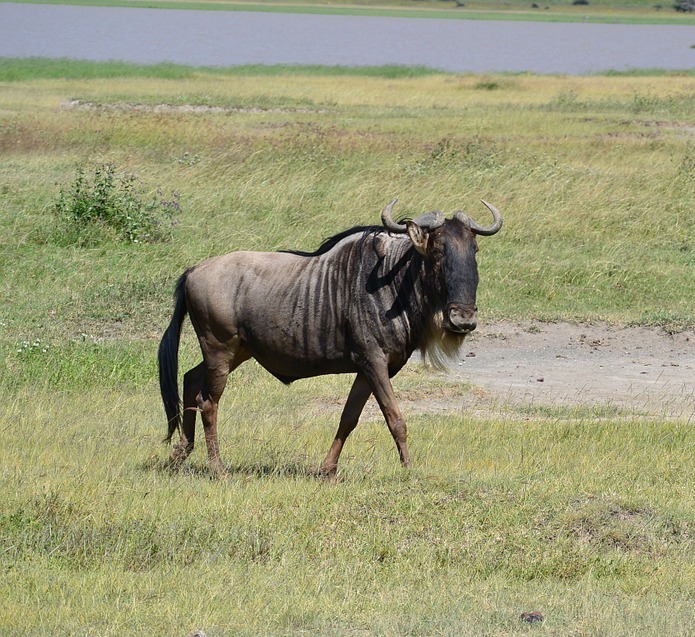The planet Earth is such a beautiful place. It offers itself as a place for all living things to thrive. However, living things must have a place where they can be comfortable, have sustenance, and be safe. For us humans, we consider it our homes. Meanwhile, animals need a place where their species can thrive, where food sources are available, and where the environment can adapt to their necessities. Most of the time, what we consider as homes are just trees, the forest, or the river for animals. These animal refuges are what we regard as habitats.
A habitat is an ecological and environmental domain inhabited by species of animal, non-living things, and other organisms. There are many types of habitats, but not all animals can thrive in all these types. Some animals are endemic to one specific habitat. For example, polar bears cannot thrive in the forest. Their sole habitat is on the sea ice. However, some animals can live in two or more habitats. For instance, amphibians (frogs, turtles, frogs, etc.) can live on both land and water.
Animal habitats are such a great topic to discuss, especially if you are thinking of traveling to Africa. The African wilderness is home to thousands of animals and plants that reside in different habitats.
Read further to know more about the habitats in Africa.
Embarking on a best safari in south africa allows you to witness these habitats firsthand and observe the incredible animals that call them home. Whether you’re exploring the arid zones where camels and desert foxes thrive, venturing into the savannah woodlands with their iconic lion and leopard populations, or immersing yourself in the beauty of fynbos and indigenous forests, each habitat offers a glimpse into the intricate balance of nature.
Eight most popular habitats in Africa
Desert– Being the driest habitat on the planet, a desert only gets fewer than 25 centimeters of rainfall each year. It covers one-fifth of Earth’s land area and is present on every continent. Despite its extremely hot condition, most deserts are conducive for animals and plants that can survive without much water.
The biggest hot desert on Earth, the Sahara Desert, can reach temperatures of up to 50 degrees Celsius. Meanwhile, the Namib Desert in southern Africa is home to one of the Earth’s largest conservation areas, the Namib-Naukluft Park. Another famous African dryland is the Kalahari Desert, a desert that occupies parts of Angola, Zimbabwe, and Namibia. This desert is not as dry as the other two, as it has grasses, shrubs, acacia trees, and hundreds of plant species in its area. These major three deserts are home to giraffes, hyenas, lions, and several bird species.
Arid Zone – This habitat is characterized by excessive heat and inadequate rainfall. There are three types of climate when describing an arid zone: the tropical climate (when rainfall happens during summer), the Mediterranean climate (when rainfall happens during autumn to winter), and the continental climate (when rainfall is distributed evenly during the whole year).
Animals such as antelopes, desert foxes, scorpions, and camels flourish in arid zones.
Savannah Woodland – In this habitat, the trees and shrubs are situated rather widely apart from each other so that the open canopy can allow sufficient light to reach the ground. The trees are medium in size, and its crowns form umbrella shapes to provide shade to the animals that reside on the ground.
This habitat is home to the vicious wildlife animals—lions, cheetahs, hyenas, and leopards.
Savannah Grassland – While a savannah woodland has tall trees, this habitat is endowed with tall-grass prairies and steppes. However, there are few trees like cottonwoods, willows, and oaks that grow among the grasses and flowers.
This kind of habitat supports diverse animal species, including wolves, wild horses, prairie dogs, jackrabbits, coyotes, gazelles, zebras, hawks, snakes, and owls.
Fynbos– This habitat is often mistaken as a paradise rather than a habitat for animals due to the breathtaking, beautiful plants that fill its land. Located in South Africa’s Cape, this is deemed to be more botanically diverse than the Amazon. Likewise, it was also said that numerous species live here that cannot be found anywhere else in the world.
Animals such as jackals, baboons, grysbok antelopes, bonteboks, rare geometric tortoise, and Cape sugarbirds are what flourish in this habitat.
Indigenous Forests – The African continent is rich in forests, which is why it is often called the Earth’s lungs. They possess a broad spectrum of flora and fauna, holding thousands of species of plants and animals. A few of the most notable forests in Africa are the Mau forest, Cross-Niger Transition Forests, Ongoye Forest, Newlands Forest, and the world’s second-largest rainforest, the Congo Basin.
The indigenous forests provide refuge to numerous animals such as African forest elephants, buffaloes, chimpanzees, baboons, lions, warthogs, hippos, zebra, monkeys, birds, and so much more.
Swampland– This area is characterized by wet forested areas. There are two main types of swamplands: freshwater and saltwater. The former is structured along rivers or lakes, while the latter is situated along tropical and subtropical coastlines. Famous African swamplands include the Sudd, Okavango Delta, and the Bangweulu Floodplains.
This habitat serves as a shelter to several animals such as black lechwes, elephants, buffaloes, hippos, crocodiles, zebras, wildebeests, and in rare occasions, hyenas and leopards.
